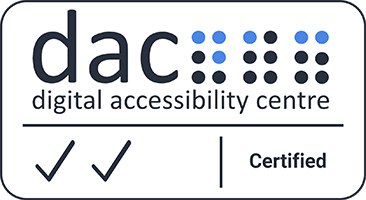Nationwide’s decision to offer borrowing of up to six times income1 has seen a 53 per cent increase in the number of first-time buyers using its Helping Hand mortgage over the last year.
Between October 2024 and September 2025, Britain’s biggest building society supported around 23,000 people into their first home through Helping Hand, compared to around 15,000 in the 12 months prior – demonstrating the impact of increasing the limit from five-and-a-half to six times Loan-to-Income (LTI). The number of Helping Hand completions on new build2 properties between October 2024 and September 2025 also jumped, increasing by 102 per cent, in a major boost to housebuilders and the government’s housebuilding ambitions.
The period also benefited from regulatory changes including clarification of stress rate rules3 by the Financial Conduct Authority (FCA) and relaxation of the LTI flow limit4 by the Prudential Regulation Authority (PRA) earlier this year. These changes have benefitted first-time buyers, with Nationwide quick to respond by reducing stress rates in May, extending Helping Hand to 95% LTV new build houses in June and relaxing Helping Hand minimum income requirements in July.
Henry Jordan, Nationwide’s Group Director of Mortgages, said: “Affordability remains a significant barrier to homeownership. We introduced Helping Hand in April 2021 to address this, and we’re delighted to see the positive impact it’s made for so many of our members, supporting more than 63,000 into their first home.
“These latest figures for the past 12 months show that our decision to increase borrowing up to six times income has been a gamechanger for thousands of first-time buyers. But we’re not stopping there, and with the support of government and regulatory changes throughout 2025, we’ve been able to progressively increase our support for potential homeowners as we continue to put first-time buyers first.”
Helping Hand: Nationwide’s Helping Hand was launched in April 2021. It gives eligible first-time buyers the option of borrowing up to six times income when taking a five or ten-year fixed rate mortgage up to 95 per cent Loan-to-Value (LTV). This equates to a 33 per cent uplift versus Nationwide’s standard lending at 4.5 times.
Nationwide has helped more than 63,000 people into a home of their own via Helping Hand since its launch in April 2021, with around £13 billion lent. Last year, Nationwide helped more first-time buyers than any other lender.
Helping Hand – increased borrowing: An eligible first-time buyer earning £30,000 with a 5% deposit could borrow up to £180,000 with a Helping Hand mortgage - £45,000 more than they could without it (£135,000). A couple with a joint income of £50,000 and the same deposit could borrow up to £300,000, compared to just £225,000 without Helping Hand – a £75,000 uplift.
Helping Hand - average age: Helping Hand is enabling people to bring forward the purchase of their first home. The average age of sole applicants using Helping Hand is 31 (for joint applicants, it’s 30 years old). This is two to three years earlier than the average age of a first-time buyer across the market, which currently stands at 33, according to UK Finance.
Helping Hand – regional take-up: Nationwide’s House Price Index5 shows UK first-time buyers face an average property price of £231,260, but costs vary.5 Helping Hand has been a gamechanger in the Outer South East, where the average price is £263,455. The region leads uptake, with 28 per cent of all Helping Hand mortgages and 15 per cent of all Nationwide’s first-time buyer mortgages.
Helping Hand is most popular in higher-cost areas. In London, where the average first-time buyer home is £450,255, it makes up over a fifth of all Helping Hand mortgages (23%) and 10 per cent of Nationwide’s total first-time buyer mortgages. In the South West, with average first-time buyer house prices at £247,706, it accounts for 12 per cent of Helping Hand mortgages. In contrast, uptake is lower in the North West, which accounts for just four per cent, despite the region representing 11 per cent of Nationwide’s first-time buyer lending. This may be down to the lower average first-time buyer house price being £173,114.
Single or joint applicants: Single applicants for Nationwide’s Helping Hand are more prevalent in the north of the country. More than nine in ten (92%) Helping Hand cases in Scotland were single applicants – that compares to just 64 per cent of non-Helping Hand cases. In the North (which comprises areas, such as Tyneside, Teesside and Cumbria), 87 per cent of Helping Hand cases were from single applicants (versus 58% of non-Helping Hand cases).
At the other end of the country, the Outer Metropolitan (46%) and Outer South East (45%) regions saw the biggest proportion of joint mortgage applications using Helping Hand.
Occupational support: The minimum income requirement (£30,000 for single applicants and combined £50,000 for joint applicants) has meant that Nationwide’s Helping Hand has supported first-time buyers working across a variety of sectors. This includes:
- Medical professionals (doctors, nurses, dentists)
- Emergency services (police, firefighters, paramedics)
- Education (teachers and lecturers)
- Tradespeople (builders, bricklayers, electricians, plumbers)
- Government workers (civil servants, council workers)
-ends-


